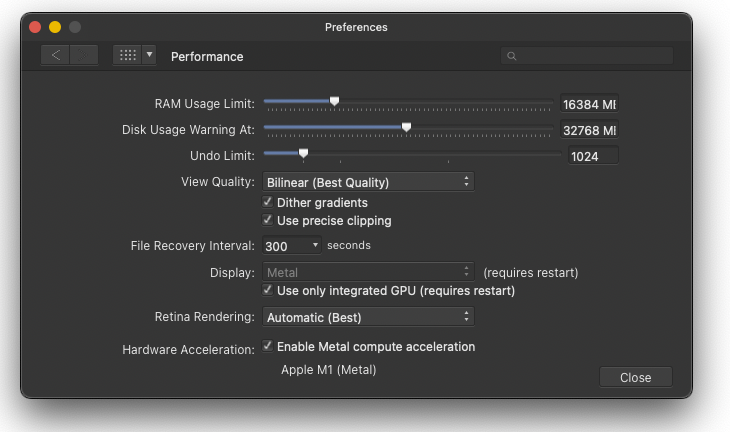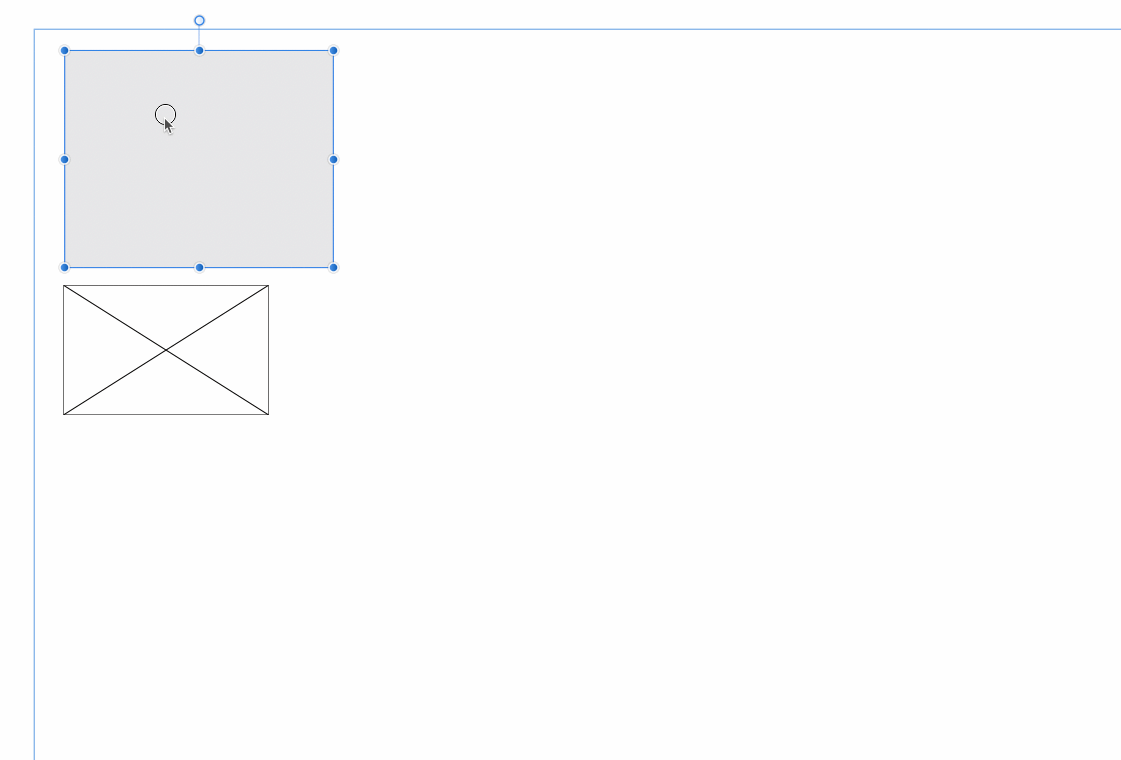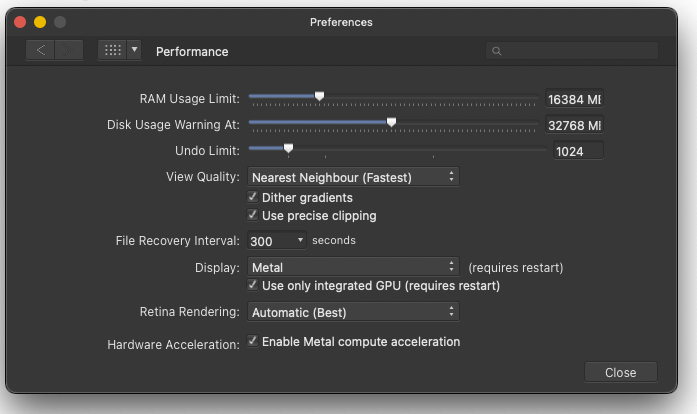-
Posts
71 -
Joined
-
Last visited
Everything posted by Customer Feedback
-
I never enable notifications anywhere. But the forum is a junkyard of irrelevant content for people coming here to actually find information in threads that go on, page after page of empty debates or last word freak posts. This forum is clearly more of a hobby for someone than a customer channel. They certainly deserve a separate forum. But results-oriented, focused customers should have theirs. Well, speaking of which, my feedback is for Serif. Not to feed another long debate. It will be without me.
-
Status bar only says that when transforming. I'm thinking of when you have enabled rotation or skew "mode": if you place the pointer slightly offset from the corner or midpoint the rotate or skew symbol appears. You can rotate around the opposite corner with CTRL without risking to resize your object At midpoints you can only skew though (and this is the bug or missing functionality, CTRL does nothing) When the pointer is above the midpoint you can rotate about the opposite midpoint, but NOT without resizing It really is a time-saving functionality, and I think you should be able to rotate around the opposite midpoint just as easily. It completely eliminates the need to have and use transform origin in my workflows.
-
I was (funnily enough in another forum) made aware of the excellent functionality when rotating objects, that if you hold down CTRL during rotation, the object is rotated around the opposite corner/side. For example if you do this when rotating the top right corner, then the object rotates around the bottom left corner. Really smooth. Unfortunately, when you do this on the around the middle on the sides, you can simultaneously adjust the object's size during the rotation, and you almost can't avoid this. Isn't this a bug?
-
A customer created a feature request for common functionality that would be child's play for Serif to implement. Whether Serif chooses to do so is another matter. It's about business priorities and of course good or bad decisions on Serif's part. We'll see. But why customers who are interested in this feature request should experience one thread after another being destroyed by side and up down chatter that could be kept private is beyond me. The thousands of posts by some commenters in a few years tells me that for some this forum is more about something other than design and productivity, let alone deliverables and billing. For serious customers, this is killing the value of this forum. I simply don't have the time or inclination to navigate around all this noise. Maybe Serif should consider making a real support and feature request forum for customers with money and deadlines at stake, and then a community forum where all this talk can take place. /Eddie
-
Amadine is a nice small program developed by very friendly and productive people in Ukraine. It is excellent, but not very feature-rich either. Have you tried Vectorstyler? We have evaluated it, and I can certainly tell that it is heavily inspired by Illustrator and CorelDRAW, among others. You won't miss the functionality of Illustrator! If you're looking to manipulate vector graphics a'la Adobe Illustrator, then I recommend you give it a test run. It's a young program from a small company, so as a company we're cautious about implementing it into our processes, but privately I wouldn't hesitate to use it. /Eddie
-
I find it strange and as a major shortcoming that undo and redo cannot be added to the toolbar via customization. We actually miss quite a few buttons on this toolbar. That they are not on the toolbar by default is partially okay, but that they can't even be configured to appear on the toolbar is really annoying.
-

the layer system
Customer Feedback replied to Alida's topic in Feedback for the Affinity V2 Suite of Products
Speaking of which, I'm a little annoyed that I forgot to send a big hello to the forum's knight and gentleman, Walt. I have researched Affinity's history by scanning the forum far and wide, and everywhere I see posts from the world's most helpful and courteous man, @walt.farrell I hope one day Serif sends you a recognition and reward, for it is an extraordinary effort you are making. Among the world's many helpful people, you are in the elite, Walt. I just wanted to make sure you heard someone say that. You've probably heard it before. Best regards, Eddie -

Fill lag when using Logitech G305 on macOS
Customer Feedback replied to Customer Feedback's topic in V1 Bugs found on macOS
If the next update fixes the problem. I'm starting to doubt that. Time is money both for us and Affinity and the rest of the world. If you assume one just sits and waits, the world will surprise you. I/we simply cannot understand why such a clear bug has not been fixed long ago in a hotfix. It's not a bug you experience in special cases. We experience it in Affinity in almost every workflow and in every single adjustment adjustment. If we choose to invest in Affinity licenses! After all, we never ever choose the alternative of purchasing devices that are "compatible with Affinity". That's why these fixes are typically called service releases. It's a mundane service to customers when a product suffers a significant defect that causes customers to lose money or lose productivity. And from the professional part of your customers, I can only say that this kind of thing is quite central to a risk assessment before investing in a product and switching to it; does the manufacturer provide support and bug fixes within an acceptable timeframe and here one year is simply not good enough. Doing some research in the forum I can also see other bugs and clear shortcomings reported in many, many times by customers that either take years to fix or have not yet been fixed/remedied. This is very worrying. And blocking, to be precise. /Eddie -

the layer system
Customer Feedback replied to Alida's topic in Feedback for the Affinity V2 Suite of Products
@Alida has two valid points: The eye icon is a de facto standard in all applications. There is no reason to deviate from it in Affinity. The algorithms and visual feedback for drag and drop need to be drastically improved. Dragging a layer under a layer (for clipping) is particularly problematic. Few pixels determine if it will be a success or failure and the visual feedback is weak, for the same reason we who work fast can make many unwanted moves of layers. And a note: it's possible it's late and I'm exhausted and cranky... But Serif, I'm just tired and annoyed by the random civilians patrolling the forum. They are hopefully not employed by Serif and represent the company. We (the company and the employees I represent) may have a different profile than the average customer in here (with our commercial background), but we definitely expected a more professional forum. In some threads I see more emotion than in a political youth club, and when the debaters so often clearly do not have a professional background - or even understand the basic needs of professionals (big or small) - the forum is more of a scare and warning for professionals: "this is not for you". Thanks to @Medical Officer Bones for a serious and well-researched post. And no, I will not spend any more of my time in this thread. I just wanted to note that Alida did indeed point out a significant problem - and my response is to Serif. /Eddie -

Day/Night Icons for darkmode
Customer Feedback replied to Tatum's topic in Feedback for the V1 Affinity Suite of Products
Set up your monitor perpendicular to a window. -
It's a horrifying idea that must thankfully be way off the radar for products that are cross platform products for Windows, macOS and ipadOS. As well as being an incredibly clunky and space-consuming UI concept, it's completely unworkable for graphics applications, where there traditionally needs to be space for a lot of icons, and preferably in small panels floating around the screen. It is therefore - or moreover - designed for a different type of users and software.
-
Today we discovered again the problem that the Windows version of Affinity saves absolute paths, and it causes miserable problems: * A designer had created a file in Designer - test.afdesign - on a Windows machine with two embedded images * The Designer file was stored in c:/users/initials/designer-test/complex/6/ * In the folder were the two images that were also embedded in the afdesign file * The /designer-test/ folder and all subfolders were copied to a mac * The designer file test.afdesign was opened in Designer for mac without problems * The employee thought it was silly to have the files embedded when they were side by side with the designer file anyway * Employee selected make linked and selected the same folder as the main document - this for both embedded files * The two embedded files are now on macos saved with their full filename from Windows - that is including the full path, and the folder '6' in macos now contains: test.afdesign c:/users/initials/designer-test/complex/6/first_image_high_quality.jpg c:/users/initials/designer-test/complex/6/test_image_.jpg first_image_high_quality.jpg test_image_.jpg It goes without saying that these files will not be copied to a Windows device with illegal characters in the filename, and in general it is unusual that such a bug is not found during testing. It's high time to tap your Windows developers on the shoulder about this bug, and more importantly the project manager who prioritizes these fixes. /Eddie
-
@ugy Please note that Affinity does not support 3 digit HEX values such as #f0f = #ff00ff I agree that there should be a hex input field regardless of what color mode you are working in, as it is a very common scenario today that you get colors from customers or guidelines in hex, and that these colors are the starting point you work from regardless of whether you are in RGB, CMYK or other. By the way, I think there are a bit many color picker modal types in Affinity. /Eddie
-
This problem is mysteriously still a problem in Affinity. During our evaluation of Affinity, we worked with files where the .afdesign documents were in one folder, and various linked resources were in subfolders: /drawing.afdesign /JPG/pic.jpg /JPG/pic2.jpg The original was created on a mac. The files were copied to a folder on a Windows machine, only drawing.afdesign was edited. This file was copied back to the original location on the mac. With relative paths all would be well. In Affinity, unfortunately, absolute paths were now saved to the files' location from Windows, and we had to relink the resources on the mac. This design flaw makes Affinity Publisher in particular completely unsuitable for professional use in a mixed environment - but it should be easy to fix. And it should be fixed at the earliest opportunity. I should add that our observations suggest that the mac versions of Affinity store a relative path, while the Windows versions appear to store an absolute path to resources in the Affinity Publisher and Affinity Designer files. /Eddie
-
Hi @Yves Signer Yes. It was an unwanted and very unpopular surprise for employees during the evaluation of Affinity in my company that you can't search for layers in the layers panel. It's such an elementary design flaw that it's a real showstopper. 😞 What has been a puzzle for us is that Affinity is designed to handle thousands of layers with good performance, but the scenario of finding one layer among many, many layers is not considered at all. This perhaps indicates that there are too many engineers involved in the whole development process. This is a mistake the rest of the market has been moving away from for decades, so it is sad to see here. We are very surprised that developer time has been allocated to putting colours on layers, but not on a search function. Banal colours are no help when working with hundreds of layers or even more. After over 20 years with Google, search is impossible to get around. Having to click back and forth is simply not good enough in 2022. An example from Adobe where you can search by layer name and other attributes. But just being able to search by name in Affinity could have been a reasonable first implementation. /Eddie
-

Fill lag when using Logitech G305 on macOS
Customer Feedback replied to Customer Feedback's topic in V1 Bugs found on macOS
Hi Thank you for an informative reply. We're hoping for a fix soon, as we're having a hard time persuading employees to choose Affinity as long as the problem exists. /Eddie -

Lag when using Logitech G305 on macOS
Customer Feedback replied to Customer Feedback's topic in V1 Bugs found on macOS
That was a short answer. I thought so. After all, it means that other customers are experiencing the problem and need to find a solution. Is the cause found and a fix on the way soon? We find it very difficult to "sell" Affinity internally when it doesn't work with high DPI devices, and then our employees choose significantly more expensive software in our software catalogue, which is neither in our nor your interest. -
One more for you, Serif Support: We also just posted a related issue in Publisher (but the issue is NOT the same): We have experienced some very annoying lag on macOS M1 machines (Monterey 12.3.1, 16GB, 1TB) when dragging even basic shapes using this mouse, that is very popular: Logitech G305 The problem is very bad in Publisher with any combination of these settings (notice that in Publisher we cannot turn Metal on and off - we can in Designer), so we have tried it all, and we don't believe we can resolve the issue using configuration - and we shouldn't have to: Here you see it: If I then use a more humble mouse, the very popular (for travel) M187 Mini Mouse: We believe it is the High DPI nature of this mouse that Designer struggles with - but we only see these lag issues in Serifs software (Designer struggles the most) We see the lag issue using any of the DPI modes the mouse has to offer in Affinity Designer on macOS. We tried on a Windows equipped computer as well using the same mouse with no issues. The mouse is configured in macOS with Tracking speed set to FAST (max) - and Scrolling speed a step above default settings. We never experienced this issue in any other design program or elsewhere - so please look into it, Serif. Regards, Eddie
-
One for you, Serif Support: We also just posted a related issue in Publisher (but the issue is NOT the same): We have experienced some very annoying lag on macOS M1 machines (Monterey 12.3.1, 16GB, 1TB) when dragging even basic shapes using this mouse, that is very popular: Logitech G305 The problem is very bad in Designer with any combination of these settings (including turning some ie Metal on and off), so we have tried it all, and we don't believe we can resolve the issue using configuration - and we shouldn't have to: The problem must be in Designer itself somewhere. It is very bad when display it set to 'Software' and improved gradually as we select OpenGL basic, OpenGL and Metal. Here you see it: If I then use a more humble mouse, the very popular (for travel) M187 Mini Mouse: We believe it is the High DPI nature of this mouse that Designer struggles with - but we only see these lag issues in Serifs software (although Publisher struggles less) We see the lag issue using any of the DPI modes the mouse has to offer in Affinity Designer on macOS. We tried on a Windows equipped computer as well using the same mouse with no issues. The mouse is configured in macOS with Tracking speed set to FAST (max) - and Scrolling speed a step above default settings. We never experienced this issue in any other design program or elsewhere - so please look into it, Serif. Regards, Eddie










